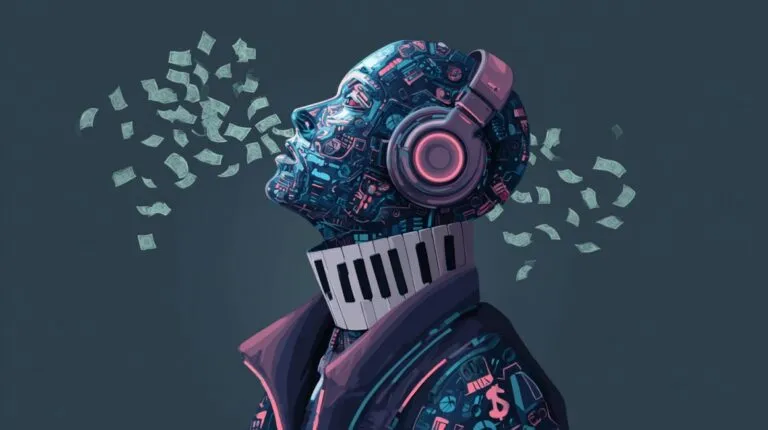While the number of frets on an electric guitar can vary, 21, 22, and 24 frets are the most common configurations.
Each offers distinct advantages and caters to different playing styles and musical genres:
Table of Contents
Toggle21 Frets
The 21-fret configuration is a signature feature of many early electric guitars, particularly those built during the 1950s and 1960s.
The design became a standard during the golden age of electric guitar manufacturing and remains a defining characteristic of vintage models.
While newer guitars often feature extended fretboards, the 21-fret setup continues to hold a place in the world of music due to its historical significance and tonal qualities.
Advantages:
- Classic Tone: Guitars with 21 frets often emphasize a warm, full-bodied sound with bright highs and balanced mids, characteristics that helped shape rock, blues, and country music.
- Authentic Vintage Feel: Many legendary musicians played 21-fret guitars, making them a preferred option for those who want to capture the sound and feel of classic recordings.
- Neck Comfort: The slightly shorter neck length allows for a more traditional playing experience, providing a familiar feel for those accustomed to older models.
Drawbacks:
- Limited Upper Register: With only 21 frets, players have fewer notes available at the higher end of the fretboard. This can present challenges for those who perform intricate solos or require extended high-pitch access.
- Not Ideal for Certain Genres: Modern styles that incorporate extensive lead work, fast runs, and higher bends may feel somewhat restricted without additional frets.
Notable 21-Fret Model: Fender Classic Series ’50s Stratocaster
- A tribute to the original Stratocasters that shaped the sound of early rock and blues.
- Features period-correct pickups that deliver bright, articulate tones.
- Equipped with a soft V-shaped maple neck for a comfortable grip and effortless playability.
- A top choice for musicians who prefer the feel and sound of vintage electric guitars.
22 Frets
The introduction of the 22-fret guitar provided players with an extended range while keeping the neck comfortable.
By the late 20th century, it became a go-to choice for many manufacturers, offering a balance of playability and tonal versatility.
Advantages:
- Extended Note Range – The additional fret provides access to higher notes, making it a valuable feature for lead guitarists and soloists.
- Familiar Neck Feel – Despite the extra fret, the overall length and shape of the neck remain close to traditional designs, ensuring a smooth transition for players accustomed to 21-fret models.
- Standard in Modern Guitars – Widely available across various brands, making it accessible to musicians across different genres.
Drawbacks:
- Neck Pickup Placement – The additional fret requires slight repositioning of the neck pickup, bringing it closer to the bridge. This shift can lead to a slightly brighter tone compared to a 21-fret guitar. However, the difference is often subtle and does not drastically alter the instrument’s overall sound.
Notable 22-Fret Model: Gibson Les Paul Standard ’60s
- A tribute to one of the most celebrated electric guitar designs.
- Built with a mahogany body, maple top, and burstbucker pickups, it delivers warm tones with remarkable sustain.
- Its timeless aesthetic and versatile sound continue to make it a preferred choice for many guitarists.
24 Frets
The 24-fret guitar became widely recognized in the 1980s as more guitarists pushed technical boundaries in rock and metal.
The extra two frets extend the instrument’s range, allowing players to hit higher notes without relying on artificial harmonics or extreme bending.
Brands such as Ibanez, Jackson, and PRS helped cement the 24-fret configuration as a staple among shredders and progressive musicians.
Benefits:
- Extended Range: The additional frets allow access to a full two-octave range per string, making it ideal for advanced solos and complex lead work.
- Improved Upper-Fret Access: Many 24-fret guitars feature deep cutaways or ergonomic neck joints, making it easier to reach the highest notes.
- Designed for Speed: These guitars often come with flatter fingerboards, jumbo frets, and thinner neck profiles, catering to fast-playing styles.
- More Tonal Options: With the extra frets, guitarists can experiment with higher-pitched phrases that wouldn’t be possible on a 21 or 22-fret instrument.
Drawbacks:
- Pickup Placement Shift: The neck pickup sits closer to the bridge due to the additional frets. This alters the traditional warm, rounded tone typically found in guitars with fewer frets.
- Adjustment Period: Players accustomed to 21 or 22 frets might need time to adapt to the feel of the extended neck. The difference in scale perception and reach can affect muscle memory when switching between different guitar models.
For players seeking more expressive possibilities in high-register lead work, the 24-fret guitar offers clear advantages. However, tonal differences and playability changes should be considered before making the switch.
When Should You Change Your Frets?
Frets play a crucial role in shaping how a guitar sounds and feels. Over time, repeated pressure from the strings causes wear, leading to issues that impact tone and playability.
If certain notes sound dull, buzzing becomes more noticeable, or bending strings feel rough, your frets might need attention.
Below are key indicators that a refret is necessary, along with considerations for those thinking about replacing their frets.

Fret Wear and Tear
After years of playing, frets begin to show physical signs of deterioration. The metal wears down where the strings make contact, altering the feel and sound of the instrument.
- Flattened frets – When frets develop flat spots instead of maintaining their rounded shape, the notes can lose clarity and sustain.
- Grooves and indentations – Heavy playing creates divots in the frets, causing intonation issues and inconsistent string contact.
- Buzzing and dead notes – Worn frets can prevent strings from vibrating properly, leading to unwanted buzzing or muted notes.
Uneven Frets
Not all frets wear down at the same rate. Some frets may become lower than others, leading to inconsistencies that disrupt playability.
- Buzzing in certain areas – If one fret wears down more than another, the higher fret will interfere with the string’s vibration.
- Notes not ringing out properly – Uneven frets can cause dead spots on the fretboard, making some notes sound dull or choked.
- Inconsistent intonation – If a guitar struggles to stay in tune along the neck, uneven frets could be the reason.
Upgrading to a Different Fret Material
Refretting isn’t always about fixing problems—it can also be a way to enhance the feel and sound of the instrument. Different fret materials affect durability, tone, and playability.
- Stainless steel – These last significantly longer than traditional frets, providing a bright tone and smooth bends.
- Nickel-silver – A common choice for their warm sound, but they wear down faster than stainless steel.
- Gold Evo – A middle-ground option that offers durability without the brightness of stainless steel.
Changing frets should only be left to a professional. Unless you’re a seasoned luthier, DIY refretting can turn your prized guitar into a nightmare. Trust me, it’s worth the investment to take it to a pro.
Related Posts:
- What is the Standard Tuning for DADGAD? - Elevate…
- How To Tune An Electric Guitar - Mastering the Melody
- 10 Upgrades That Make a Cheap Electric Guitar Sound…
- 10 Best Sweep Picking Exercises - Guitar Tips & Tricks!
- How Do You Play Classico Tenacious D on Guitar? -…
- Most Important Guitar Chords for Beginners: Paving…















